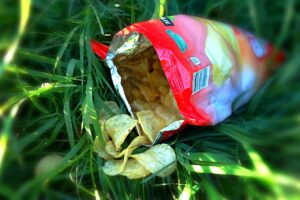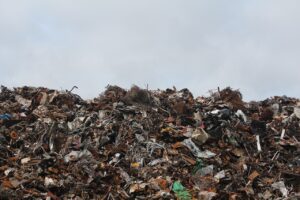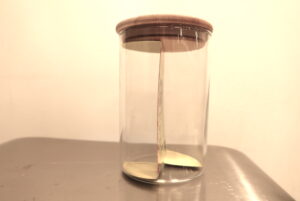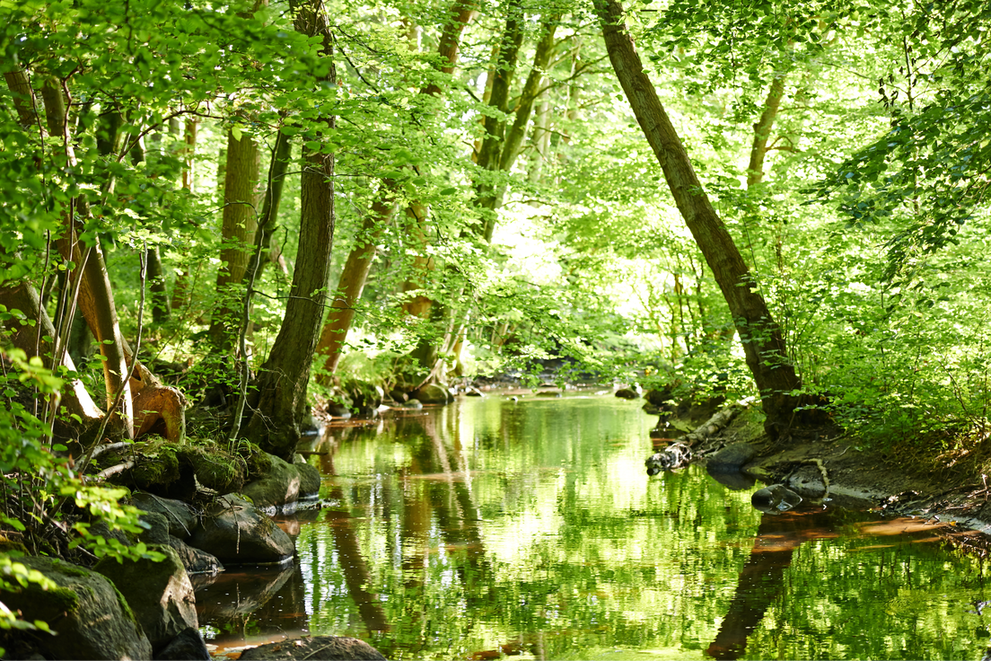Option 1: Select a Plan to Gain Full Platform Access
Option 2: Use Your Credits to Unlock This Article
Unlock credits cost:5
Available credits: N/A
Buy More Credit
Are Bioplastics Better Than Plastics?
With the global issue of single-use plastics threatening our planet, bioplastics emerged as a promising alternative to traditional plastic packaging. However, various terms in the landscape of bioplastics exist, like biodegradable, compostable, biobased, and biopolymers, which can lead to confusion and greenwashing through unclear marketing claims of being “biodegradable” or “eco-friendly”. Are bioplastics better than plastics?
This lack of clarity poses challenges for consumers and policymakers seeking transparent information to make informed decisions.
To help us navigate the world of bioplastics, the 5 Gyres NGO, established in California, recently conducted a groundbreaking scientific study to decipher the diverse terminologies associated with bioplastics.

To delve into the insights from this study, Captain Forest had the opportunity to interview Lisa Erdle, Research and Innovation Director at 5 Gyres, to shed light on the meaning and implications of these terms and to assess if bioplastics are better than plastics.
Q: Plastics’ non-recyclability and toxicity are two common issues. Can you tell us more about it?
For decades, companies have depicted plastics as a versatile solution to numerous challenges, perceiving them as easily recyclable.
However, the truth is far more complex and concerning. Non-recyclability and toxicity are pervasive issues associated with plastic waste, presenting significant hurdles on our journey toward sustainability.
Plastics’ complexity lies in their composition. With various polymer types and additives incorporated to confer specific functions like durability, flexibility, and color, plastics become a blend of potentially toxic and non-recyclable materials. 
While some plastic items, such as high-density polyethylene jugs, have high recyclability rates and can be recovered, other items, such as thin film packaging or multi-layered chip bags, are challenging to recycle.
Their complex composition and the resource-intensive processes required for recycling make them economically and technically impractical to recycle.
Consequently, a significant portion of these supposedly recyclable plastics find their way to landfills, perpetuating a misconception that they are more sustainable than they truly are.
Beyond plastics’ non-recyclability, toxicity is another pressing concern. In everyday use, chemicals from plastics can leach into water and air, contaminating our environment. Even when burned, plastics release harmful substances that further degrade air quality.
Q: Can you clarify the following terms: biodegradable, compostable, bioplastic, biobased, and biopolymers?
In recent years, an increasing number of individuals have become aware of the environmental impact of plastics. This awareness has led to a surge in innovation, with the development of biodegradable, compostable, and bioplastics, all marketed as “eco-friendly” alternatives. However, companies, consumers, and policymakers can often misunderstand the terminology used to describe these products, leading to misconceptions and confusion.
It’s crucial to recognize that something can be technically recyclable but not recycled in practice, as the same holds for biodegradable and compostable products.
Biodegradable and compostable plastics
Merely labeling an item as biodegradable or compostable does not guarantee its breakdown in real-life conditions. One of the reasons behind this is the requirement for proper waste management facilities to identify and collect these products separately to ensure they reach the appropriate recycling facilities.
Take toothpaste tubes as an example of technically recyclable plastics that often end up in landfills or incinerators. Despite their recyclability, waste management facilities struggle to differentiate them from non-recyclable toothpaste tubes, leading to improper disposal practices.
Another instance is PLA, a type of biodegradable plastic. PLA can break down into its components and mineralize, ultimately converting into CO2 and other compounds.
The end-of-life stage for these items is critical, as it determines whether they will continue to harm the environment or degrade safely.
While biodegradable items can naturally break down, it’s important to note that this process can still take a considerable amount of time, during which they can cause harm.
For instance, biodegradable plastics used in toys can fragment like traditional plastics, generating microplastics with adverse physical and chemical environmental effects. Despite their technical biodegradability, they can persist in the environment and behave like conventional plastics.
The longevity of biodegradable items varies greatly depending on the polymer type, design (e.g., thickness), and environmental conditions, meaning they could still pose a risk even if they eventually degrade. We must avoid these vague terms and adopt more precise standards.
These standards can also establish clear guidelines regarding the duration it should take for a product to break down into constituent parts within a specific environment.
Bioplastics
Bioplastic is another commonly used term that can be perplexing. Bioplastics are derived from renewable resources like cornstarch instead of petrochemicals.
However, not all bioplastics are biodegradable, and not all biodegradable plastics are made from renewable resources. Therefore, the term bioplastic does not necessarily indicate that a product is sustainable or environmentally friendly.
Biobased and biopolymers
Similarly, the terms biobased and biopolymers are used to describe sustainable products.
In conclusion, it is vital to understand the precise meanings behind the terms used to describe sustainable products. Labeling an item as biodegradable or compostable does not guarantee its practical breakdown. Likewise, the term bioplastic does not automatically signify sustainability or environmental friendliness. To make well-informed decisions about which products to use, we must look beyond the label and consider the specific circumstances surrounding the product’s use and disposal.
Q: Are bioplastics the answer to the plastic problem?
The quest for a solution to the plastic problem has placed bioplastics and biodegradable plastics under the spotlight, albeit with certain limitations.
However, it’s important to note that thicker biodegradable plastics may take significantly longer to degrade and can fragment into microplastics, causing negative consequences. The effectiveness of biodegradable plastics is also influenced by the types of additives used in their composition.
Biodegradable plastics that incorporate harmful chemical additives can be just as problematic as traditional plastics, exacerbating environmental concerns. Consequently, careful consideration of additives is crucial in ensuring the sustainability of these materials.
Nevertheless, there are promising applications for certain types of biodegradable plastics. They exhibit relatively rapid breakdown when introduced to composting streams or the natural environment, offering potential benefits in specific contexts.
Q: What are the lessons learned from your case study?
Using biodegradable plastics as a remedy for plastic pollution is a complex issue. Our case study highlights an important lesson: the thickness of biodegradable items plays a significant role, with thinner materials exhibiting faster degradation compared to their thicker counterparts. However, biodegradable plastics’ efficacy relies on the availability of waste management infrastructure and regulatory frameworks to manage their disposal. If an item is intended for composting, it necessitates a well-established infrastructure to manage its end-of-life phase effectively.

Hence, adopting a comprehensive approach encompassing the product’s entire life cycle is imperative to ascertain whether it outperforms traditional plastics.
This becomes particularly crucial in our globalized world, where products are distributed globally, yet recycling and composting facilities may not be universally accessible.
Q: The best alternative is to replace harmful plastic products with reusable or refillable products that can provide the same service without using any disposable materials at all. Can you share examples of better alternatives?
We have several existing alternatives to single-use products to minimize plastic waste, especially in personal care and food products.
 For food products, adopting a bring-your-own-container system enables individuals to refill their containers with dry goods or liquids at dedicated refill stores. If these systems may still not be universally accessible, businesses are actively pioneering reuse systems to combat the issue of plastic waste.
For food products, adopting a bring-your-own-container system enables individuals to refill their containers with dry goods or liquids at dedicated refill stores. If these systems may still not be universally accessible, businesses are actively pioneering reuse systems to combat the issue of plastic waste.
Q: A word to conclude this interview?
Are bioplastics better than plastics? Companies often employ buzzwords like “biodegradable” or “eco-friendly” as marketing tactics, aiming to appeal to environmentally conscious consumers. However, companies need substantive information about the true sustainability of the products in question to use these terms. To tackle the issue of misleading labels and foster a culture of sustainable consumption, we must advocate for clear regulations and guidelines that hold companies accountable for their claims.
Consumers also have an essential role to play in this endeavor. Individuals can demand transparency from the brands they support by actively engaging in responsible purchasing decisions. This entails seeking comprehensive information about a product’s end-of-life considerations, such as recyclability, compostability, or appropriate disposal methods. Therefore, by combining regulatory measures and informed consumer advocacy, we can promote a marketplace where sustainability claims are substantiated, enabling consumers to make well-informed choices aligned with their values.




